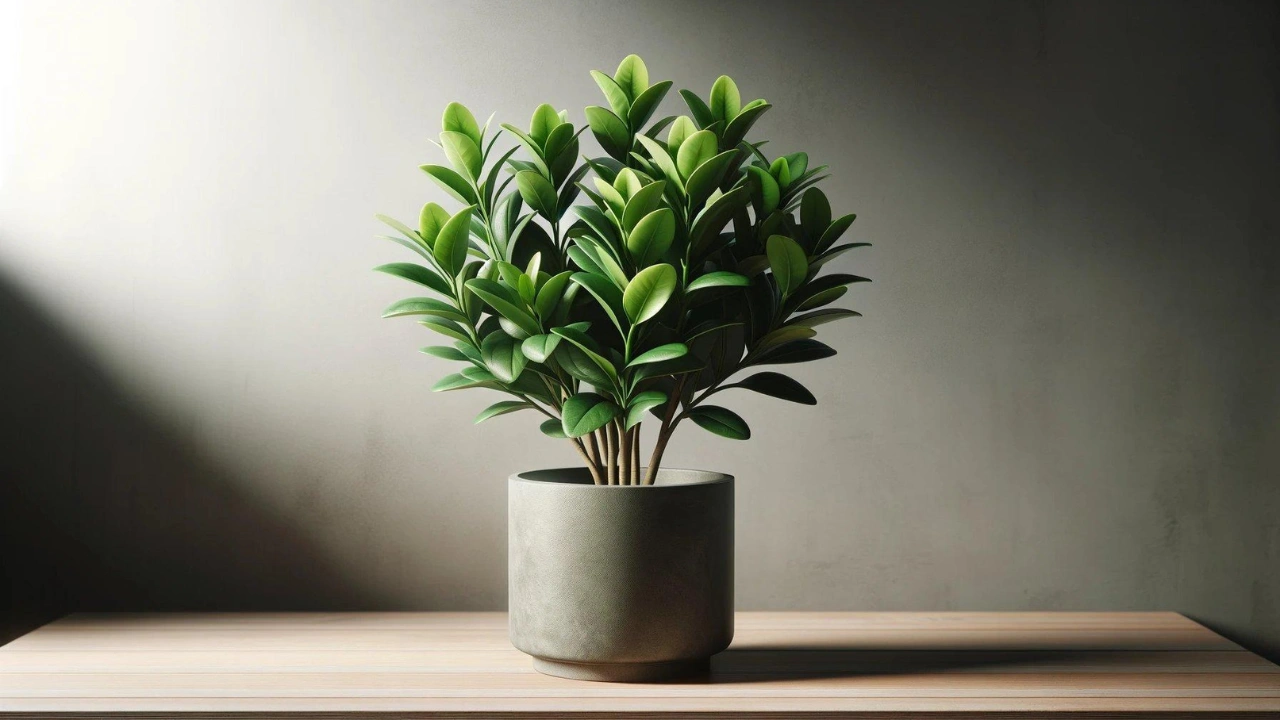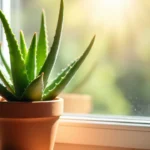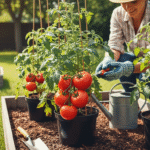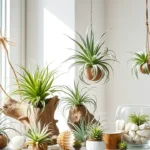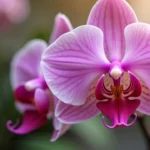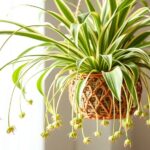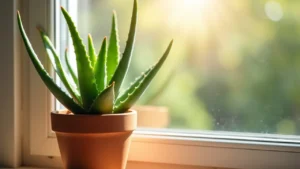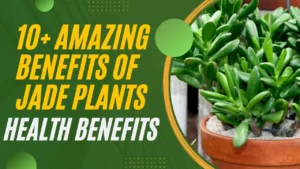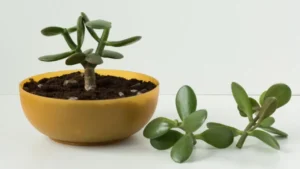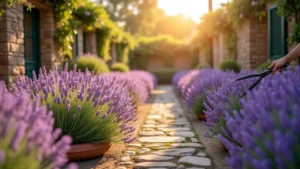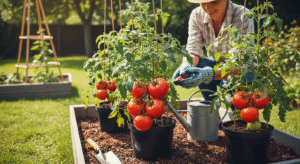Do you know that a NASA study has found the ZZ plant as the best air purifier? Researchers have found that this plant can remove toxins such as xylene, toluene, and benzene from the air.
Apart from this major advantage, this plant has attractive dark green leaves. Also, it tolerates neglect, as it is a drought-tolerant plant and accepts low-light conditions.
The ZZ plant, with its perfect combination of benefits and beauty, was linked to a cancer rumor in 2010. Do you want to know the truth? Keep reading to find out the truth about this plant, including how to care for it and how it grows.
Last but not least, don’t forget to check the benefits that the ZZ plant has to offer.
Table of Contents
About ZZ Plant
| Common Name | ZZ plant, Zanzibar gem, eternity plant |
| Scientific Name | Zamioculcas zamiifolia |
| Family | Araceae |
| Plant Type | Tropical perennial |
| Mature Size | 3-4 ft. tall |
| Sun Exposure | Low, indirect light; semi-shade |
| Soil Type | Well-draining |
| Soil pH | Neutral to acidic (6.0-7.0) |
| Bloom Time | Spring |
| Flower Color | Yellow-brown spadix |
| Native Area | Eastern Africa |
| Toxicity | Toxic to humans and animals |
Varieties of ZZ Plants
There are around 10-12 varieties of ZZ plants available. Some of the common varieties of ZZ plants are listed below:
1. Zamioculcas zamiifolia ‘Raven’
This is a relatively new variety of ZZ plants that has dark purple-maroon foliage. The most dramatic plant, with leaves that emerge a bright lime-green color and gradually turn a deep purple, almost black in the shade as they mature.
2. Zamioculcas zamiifolia ‘Variegated’
This ZZ plant is often characterized by its green foliage that is variegated with white, and yellow colors; variegation may fade if not given adequate light.
3. Zamicro
This is the dwarf version of the ZZ plant that grows slightly smaller (24 inches tall) with a slender leaf shape.
4. Zenzi
Another dwarf variety of the ZZ plant (no taller than 15 inches) has smaller, slightly curled leaves.
How to Propagate ZZ plant
In propagation, there are three ways:
1. Division: In the division method, rhizomes that are having at least one leaf stalk are divided. After that, the division is replanted in new pots with fresh soil. Also, it is best to do this while repotting your plant.
2. Leaf cuttings: While taking leaf cutting, leave a bit of stem attached and then insert that stem directly into moist soil. After placing them in the soil, place them in a warm and bright light. In addition, water it occasionally. After several months, the cuttings will begin to form roots. Moreover, a good time to do this propagation method is while pruning or shaping your plant.
Follow the below easy steps to propagate the ZZ plant through Leaf cuttings,
- With the help of a sterilized and sharp cutting tool, cut an entire stalk having leaflets.
- Now, remove the bottom leaves from the stem, and place the stem in a jar of water.
- Lastly, place that jar in indirect light. After a few months, roots will begin to form. Also, make sure to change water weekly to prevent bacterial growth.
3. Leaf stalk: This is the faster propagation method, here you need to cut off an entire leaf stalk at the base and replant it in water until roots are formed.
Usually, ZZ plants are commonly propagated in two ways, division method and stem cuttings. As seen earlier, the division method is a quite simple way to create more ZZ plants, only you need to separate the rhizomes the next time while you re-pot your plant and just place them in another pot.
However, propagation through stem cuttings takes a little bit longer than propagating by division, you may need to wait 6-9 months before roots begin to grow.
ZZ Plant Care
The ZZ plants are known for being easy to care for houseplants and even gardeners with the blackest of thumbs can keep this plant alive with minimum care. All these plants need is adequate light and good watering every couple of weeks. However, don’t worry about forgetting to water your plant, as these plants grow from rhizomes which helps them to store water under the soil, making ZZ plant drought-tolerant plants.
Although this plant thrives outdoors, it is best to grow them indoors. In case, you want to grow them outside, then plant them in a pot that you can bring indoors whenever the temperature falls down.
Moreover, this plant has naturally shiny leaves that can begin to look dull over time due to accumulated dust on them. However, never clean the leaves of a Zanzibar gem with any commercial leaf shine as this will clog the pores of your plant. Instead, you can gently wipe away the dust and debris with a damp cloth to restore its shine.
Apart from the above care tips, let us understand the ZZ plant’s care in detail,
1. Light Requirements for ZZ Plant Growth
This easy-going plant grows best when it receives a lot of bright and indirect light. So, make sure to place them near a window that receives a lot of natural light that will make your ZZ plant happy. Moreover, this plant can survive in low light conditions.
Even if you place the ZZ plant in a dark corner of your interior, it won’t need growing light to thrive. However, you can put generic fluorescent lighting at home.
In fact, you might actually need to place fluorescent light if your ZZ plants are getting too much direct sunlight. It is certainly a factor to consider if you want to grow ZZ as a foliage plant.
As ZZ plants tolerate a wide range of lighting conditions, this makes them ideal indoor plants. However, avoid direct sunlight from the window, as this can scorch the leaves of your plant.
2. How to Water Your ZZ Plant Properly
Are you one of those who constantly kill plants as you keep forgetting to water them?
In the case of the ZZ plant, it can survive a long period without water. Obviously, if this plant can survive drought-prone Africa, then certainly it can live in your apartment.
You only need to water them a couple of times each month, also, it depends on the weather conditions.
You are good, as long as you are not waiting until the soil becomes bone-dry. However, it is not that watering bone-dry soil will kill the ZZ plant. But the transition between bone-dry and soaking wet can cause a lot of stress to your plant that can inhibit its growth.
Also, keep in mind that overwatering is the easiest way to kill your ZZ plant. As this plant is easily susceptible to root rot, make sure that the plant is planted in well-draining soil and pot.
Thanks to the ZZ plant’s thick rhizomes, they are extremely drought-tolerant and can handle infrequent watering. While watering, give it a long drink so that the moisture runs out of the bottom of the pot, and throw out the excess water.
3. Optimal Temperature and Humidity for ZZ Plants
Most houseplant prefers temperature in the range of 18℃-30℃, however, it is best not to let the temperature go below 15℃. Also, keep in mind not to sweat out the ZZ plant, it likes average home humidity and can tolerate dry air.
In addition, avoid placing your ZZ plant close to drafts or any colder areas of your home. ZZ plant does not need humid conditions, however, if your home runs on the dry side, please increase the humidity around the ZZ plant by purchasing a humidifier or you can place your plant on top of the water tray.
4. Choosing the Right Soil for ZZ Plants
The ZZ plants are not overly picky about their potting soil as long as you are using a well-draining potting mix. Moreover, in the potting mix, you can add ingredients such as lava rocks or perlite, this will increase soil aeration as needed.
5. Fertilizer Tips for a Healthy ZZ Plant
Generally, ZZ plants do not require regular fertilizer to thrive. However, if you want to increase the plant size or vigor, fertilize your ZZ plant with indoor plant fertilizer diluted to half-strength. You can apply this fertilizer 1-2 times during the ZZ plant’s active growing season.
6. Pruning and Shaping
When pruning a ZZ plant, new growth will not be encouraged as with other houseplants, but it is often advantageous to improve the plant’s shape and remove yellowed or damaged foliage.
In the case, your ZZ plant is overgrown, you can remove entire stalks by pruning them away at the base with a sharp knife or pruning scissors. Also, make sure to wear gloves to avoid skin contact.
7. Potting and Repotting ZZ Plants
The ZZ plants need repotting only when they have outgrown their potting container. When your plant outgrows you can notice rhizomes pressing up under the soil against the edge of the container. Also, it can show other signs of stress if your plant has become root-bound.
For repotting the ZZ plant, wait until the spring or summer, as at this time your plant will be better able to tolerate disturbances during the active growing period. In addition, choose a potting container with a good drainage system for your Zanzibar gem.
8. Common Problems with the ZZ Plant
The ZZ Plant is generally pest-free. However, treat pests as soon as they appear with weekly sprays of a natural pesticide such as neem oil or regular wipe-downs of the plant.
Also, these plants are virtually disease-free, but keep an eye out for common pests such as mealybugs, scale, fungus gnats, and aphids that can infest your plant. You can use a bar of insecticidal soap to eliminate most of these pest problems.
However, one common problem you may have with a ZZ plant is how much water the plant is actually receiving. If its leaves are dropping, your plant is extremely dry and in need of water. At the same time, if the leaves are yellowing and dropping, it means the plant is overwatered.
Check below some common symptoms of the ZZ plant and its causes
| Symptom | Cause |
| Wilting plant, dry potting mix | Thirsty plant, underwatered |
| Wrinkled leaves | Thirsty plant, underwatered |
| Yellowing and becoming a mushy, wet potting mix | Root rot, overwatered |
Benefits of ZZ Plants
1. Removes Pollutants
We all know that indoor air pollution is a major threat to human health, mainly because, in this era of urbanization, we spend most of our time inside. However, the ZZ plant improves this severely compromised indoor air quality.
Also, according to the NASA Clean Air Study, this plant cleans your indoor air by absorbing pollutants such as xylene, toluene, and carbon dioxide. Therefore, it is a good idea to bring this plant which not only looks good but has a purpose!
2. Improves Cognitive Function
The cognitive function involves the ability to learn, think, reason, remember, solve problems, pay attention to details, and make decisions. A houseplant, especially one like the ZZ plant that improves air quality in the home, has been shown to enhance cognitive function.
3. Adaptable in Nature
ZZ plants are probably the toughest plants in the world, and that’s why they gained so much popularity. They thrive in both high and low lighting conditions. Thus, you can place it both indoors and outdoors without it affecting its performance.
Furthermore, it is well suited to container growing, so it grows well and does not reach a monstrous size that is too large for the container. In addition, pests and diseases typically don’t bother it, so you have one less thing to worry about. Definitely one of the most popular ZZ Plant Benefits!
4. Requires Less Watering
Even if you take care of everything while growing plants, you still need to look after their watering needs. However, this does not mean that your ZZ plant can survive without water, it is just that it is not as needy, in comparison to other plants. Your ZZ plant requires only once every 3-4 weeks.
The swollen underground rhizomes of this plant resemble potatoes, that can be separately planted and propagated. One of the benefits of the ZZ plant is that they store water and this makes them a drought-tolerant plant.
However, just keep these two points while watering your ZZ plant,
- Water the ZZ plant thoroughly and allow the excess water to drain out from the drainage holes.
- Also, watering too frequently or allowing the plant to sit in water will lead to root rot and eventually kill the plant.
5. Looks Beautiful!
The reason why most of us have indoor plants is that they look beautiful and transform our indoor space. ZZ plant is no exception! it literally brightens up the surroundings as its waxy leaves reflect sunlight. The stems can grow to around 3-4 feet tall and sport beautiful dark green and shiny leaves.
In addition, it’s not too big nor too small, making it ideal for both large and small spaces.
6. An Amazing Tabletop plant!
There are several benefits of ZZ Plant and this makes it win the most votes when it comes to office table plant choices. It is a wonderful tabletop plant in the early stages of growth. Plus, you can use it as a large houseplant to make a bold statement in your bedrooms!
7. Feng Shui Option!
This is an excellent feng shui plant to grow indoors. When placed in the right spot like the South-eastern, Southern, and Eastern corners of homes, it brings protective and purifying energy to your house.
8. CAM Plant
ZZ plant follows Crassulacean Acid Metabolism (CAM) means, it can consume CO2 even when the sun is down, thanks to its capability to perform a particular type of photosynthesis. This attribute of the ZZ plant makes them perfect for bedrooms!
9. Traditional Medicinal Uses
The roots of ZZ plants are rich in steroids, triterpenoids, flavonoids, and polyphenolics. Additionally, the extract contains antioxidants, and the juice has been used in Tanzania to treat earache.
Also, the locals use the entire plant to treat the inflammatory condition–Mshipa. Moreover, the leaves of these plants are also used by the shamans in the jungles of Ghana to cure stomach ailments.
Conclusion
The ZZ plant was already a common indoor plant, even before succulents went big over social media a few years ago. Since it became so popular, it isn’t uncommon to see a few of them in a home, office, or other interior areas.
If you are reading this right now, then chances are, you are also captivated by the beauty. There is also mention of it being drought-tolerant and low-maintenance, which makes it a good plant for your places with low levels of light.
Moreover, the reason this plant became extremely popular in interiorscapes is for its several benefits. Also, this plant was featured in a NASA study as an air purifier. The NASA study has found its significant effect in clearing indoor air of toxins, such as benzene, toluene, and xylene.
Finally, the ZZ plant has built a reputation as a low-maintenance houseplant. As it can sometimes go for months without water, people wonder if it’s actually a succulent? Yes, it is!
Before you leave, let me know if you have heard any rumors about this tough-as-nails plant.
FAQs
Q1. Are ZZ plants easy to care for?
ZZ plants rarely die on you because they tolerate poor conditions and neglect, making this an ideal plant for beginner indoor gardeners.
Q2. Why my ZZ plant’s leaves are turning yellow?
Q1. Are ZZ plants easy to care for?
ZZ plants rarely die on you because they tolerate poor conditions and neglect, making this an ideal plant for beginner indoor gardeners.
Q3. Are ZZ plants toxic?
The major drawback of the ZZ plant is that all the parts of the plant are poisonous. In fact, in the 2010s there were rumors that this plant is so toxic that it causes cancer. Due to this rumor, people begin to wore gloves while handling it.
Want to know the truth? Certainly, this plant is toxic but not cancerous. Therefore, avoid eating them and also keep them away from nibbling pets and children. Also, make sure to wash your hands after handling the ZZ plant to avoid skin irritation.
Q4. Why is my ZZ plant dropping leaves?
A ZZ plant requires less watering, so it can be easy to forget about watering it. However, a drastic lack of water will lead to leaf color change, shriveling, and dropping of the ZZ plant. This is quite distressing to the house plant lover! Additionally, if your plant’s soil is very dry, underwatering is the problem.
Q5. Can I grow a ZZ plant indoors?
The ZZ plant is easy to grow and care for as an indoor plant that displays small glossy leaves on stems that can grow up to 3 feet long indoors. The Zamioculcas Zamiifolia (Scientific name) grows well in low or bright lighting conditions and with frequent or much fewer amounts of water.
Q6. How to keep the ZZ plant black?
ZZ plant thrives in almost all types of light levels from low to bright light, however, it is best to keep it out of direct sunlight. Also, drought-tolerant Raven doesn’t mind low humidity and can go a couple of weeks without water. In fact, the Raven variety grows best when the soil is allowed to dry out between waterings
Q7. Is ZZ Plant a Succulent?
Yes, ZZ plants are indeed succulents as they are adapted to store water in their leaves.
Q8. Where should I place my ZZ plant?
ZZ plants thrive in lots of indirect light (direct sunlight can cause the leaves to scorch) also, it grows under the fluorescent lights of offices and commercial buildings. In zones 10 to 12, ZZ plants can be grown outdoor in areas with filtered light and well-draining soil.

